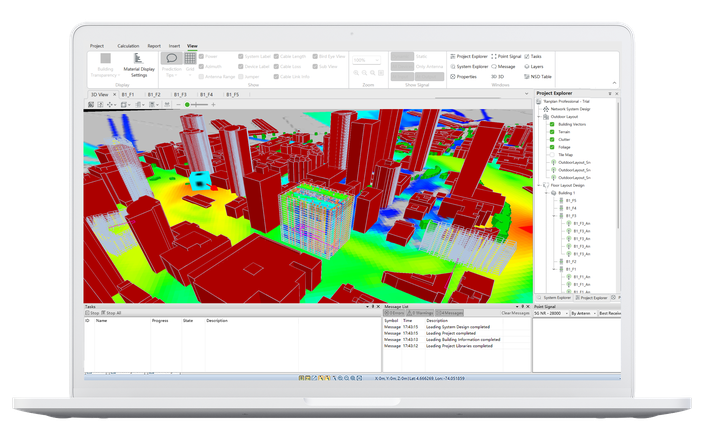Resilient Critical Communications
Emergency responders need a reliable communication system to coordinate their response efforts and save lives. Public safety agencies also require communication systems to conduct daily operations such as traffic control and investigations.
Advanced technologies such as wearable devices, drones and GPS tracking systems can enhance communication, data collection, and decision-making processes, ultimately enabling more effective and coordinated responses to emergencies and ensuring the safety of both responders and the public.




Life-saving networks
There can be no room for error when planning a public safety network because lives literally depend on it. Critical communications require a network that is precisely designed and properly implemented to support the responsiveness of emergency services. With the right software, you can plan and deploy a public safety network that mitigates interference and ensures maximum coverage and reliability.
How can Ranplan help you design a Public Safety Network?
Ranplan’s network planning software provides a comprehensive solution for designing, optimizing and validating your mission-critical network. Here are just a few of the key features:
-
3D Modelling: Our software allows you to create a 3D model of your whole environment, so you can plan your indoor and outdoor wireless network in unison.
-
Network Design: With our comprehensive database of devices, components and cabling, you can compare manufacturers and configurations to ensure the wireless network meets your specific performance requirements and budget.
-
Intelligent Automation: Our intelligent automated modules help to simplify and optimize the network design process, saving you time and ensuring the best possible network performance.
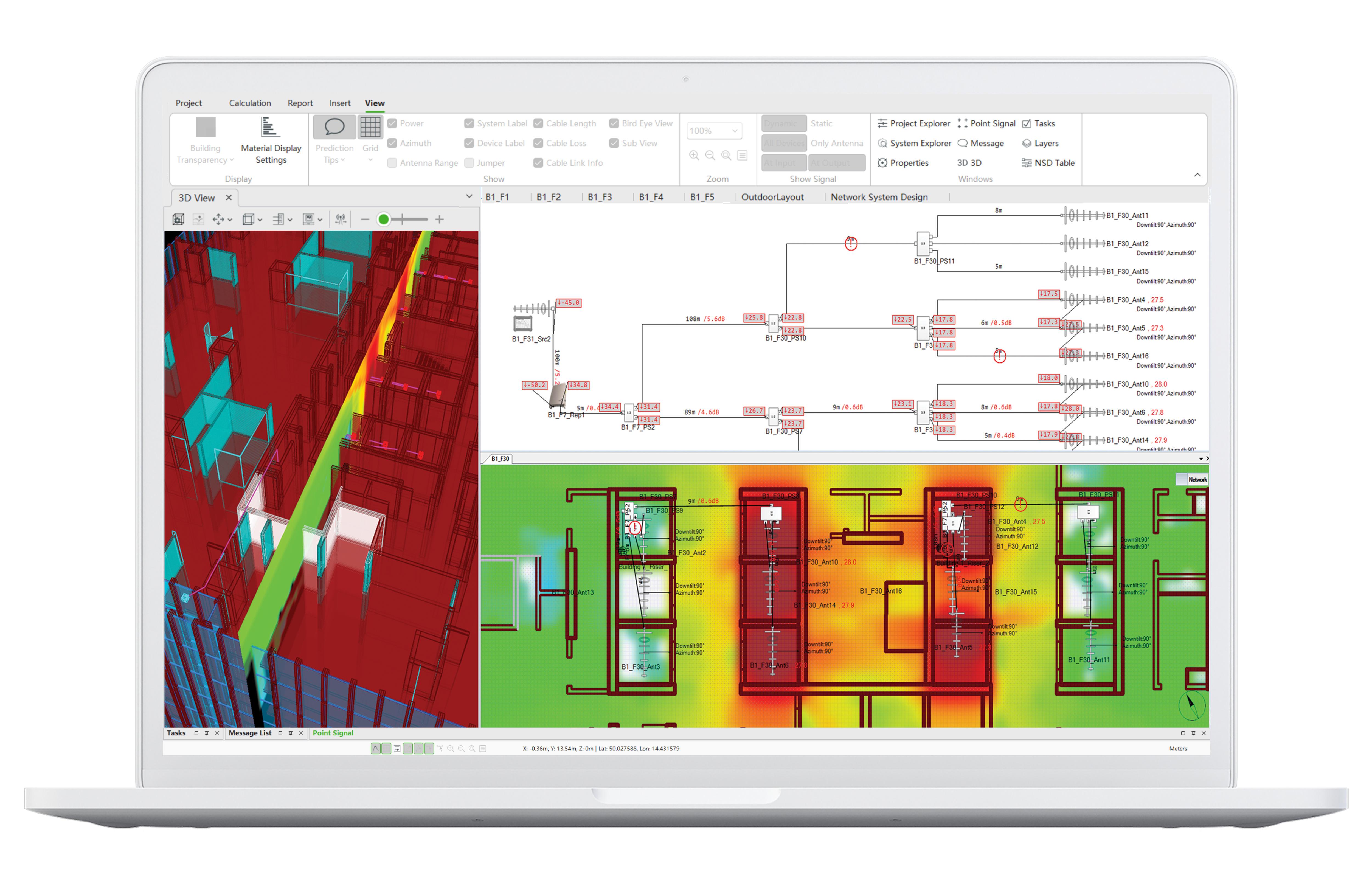
-
Signal Propagation Simulations: Our cutting-edge software utilises advanced 3D ray-tracing simulations to provide you with precise insight into the strengths and weaknesses of your network coverage and capacity. The simulations can also be used to ensure your network complies with local licensing regulations.
-
Network Failure Simulations: You can also simulate the impact of device and cable failures on network coverage and quality. Utilising the prediction calculation can adjust and validate the network configuration to mitigate potential network vulnerabilities and enhance overall reliability.
-
Customizable Reporting: Our software provides customizable reporting for project management, deployment planning, and real-time updates, so you always know exactly what's happening with your network.

Enabling dependable communications
Public Safety communication networks are critical for emergency response, public safety operations, interoperability, and resilience in all environments. With our network planning software, you can ensure that your network is optimized to remain operational during emergencies and even natural disaster situations, providing a resilient, dependable service for emergency responders.
Technologies
Design future-proofed networks to enable the latest technology.
-

Wearable devices
Body cameras and smartwatches, provide real-time communication and situational awareness to personnel on the ground. These devices enable seamless coordination, data sharing, and tracking of field personnel, improving their safety and efficiency.
-

Drones
Equipped with cameras and sensors, Unmanned Aerial Vehicles (UAV), as known as drones can quickly provide aerial surveillance and situational awareness for emergency scenes, monitor crowds, and identify hazards in hard-to-reach areas.
-

Data sharing
Mobile data terminals, GPS tracking systems, and specialized communication applications enable efficient dispatching, location tracking, and secure information sharing among public safety agencies.
-

Traffic Management
IoT sensors integrated with traffic infrastructure can monitor traffic flow, detect accidents, and optimise traffic signal timings. By providing real-time information to drivers and authorities, these sensors help in reducing congestion, improve road safety, and facilitate smoother emergency response.
-

Environmental Monitoring
IoT sensors can monitor various environmental factors such as air quality, temperature, humidity, and noise levels. This data helps identify potential hazards, pollution levels, or abnormal conditions, allowing authorities to take proactive measures to ensure public safety and health.
-

Surveillance and Security
Cameras and motion detectors can be deployed for surveillance and security purposes. These sensors can monitor public spaces, critical infrastructure, and high-risk areas, providing real-time alerts in case of suspicious activities or security breaches.
-

Emergency Detection
IoT sensors can detect smoke, heat, fire, gunshots or other violent incidents and then trigger alarms and alert emergency services. This allows the local authorities to respond quickly and mitigate potential threats.
-

Disaster Management
IoT sensors can aid in early detection and response during natural disasters such as earthquakes, floods, or hurricanes. Sensors can monitor parameters like water levels, seismic activity, or weather conditions, enabling authorities to issue timely warnings, evacuate people from vulnerable areas, and coordinate rescue operations more effectively.
-

Artificial Intelligence (AI)
AI technologies, including machine learning and computer vision, are used for video analytics, facial recognition, anomaly detection, and predictive analysis. AI helps in processing large volumes of data, identifying patterns, and generating actionable insights for public safety agencies.
Recommended products
These are a few of the recommended Ranplan products for your project.
-
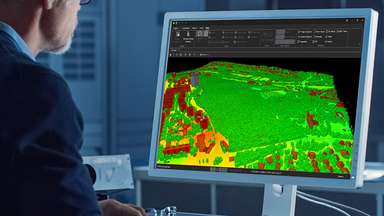
Ranplan Professional
The most powerful network design platform with intelligent algorithms to design, optimise and simulate your wireless networks.
Find out more -
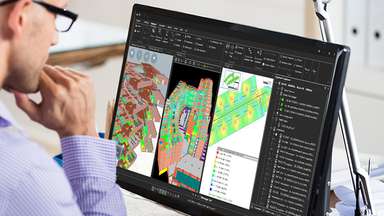
Ranplan In-Building
An accurate and high-performance in-building network design tool to rapidly and cost-effectively plan indoor networks.
Find out more -
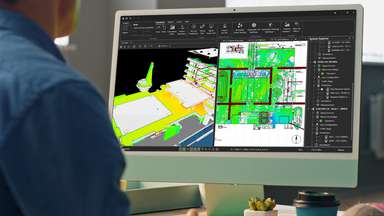
Ranplan In-Building Lite
An agile tool that significantly reduces the time it takes to design public safety networks for even the most challenging environments.
Find out more
Discover how Ranplan Professional can help you achieve accurate network design and significant cost savings
Explore Ranplan Professional